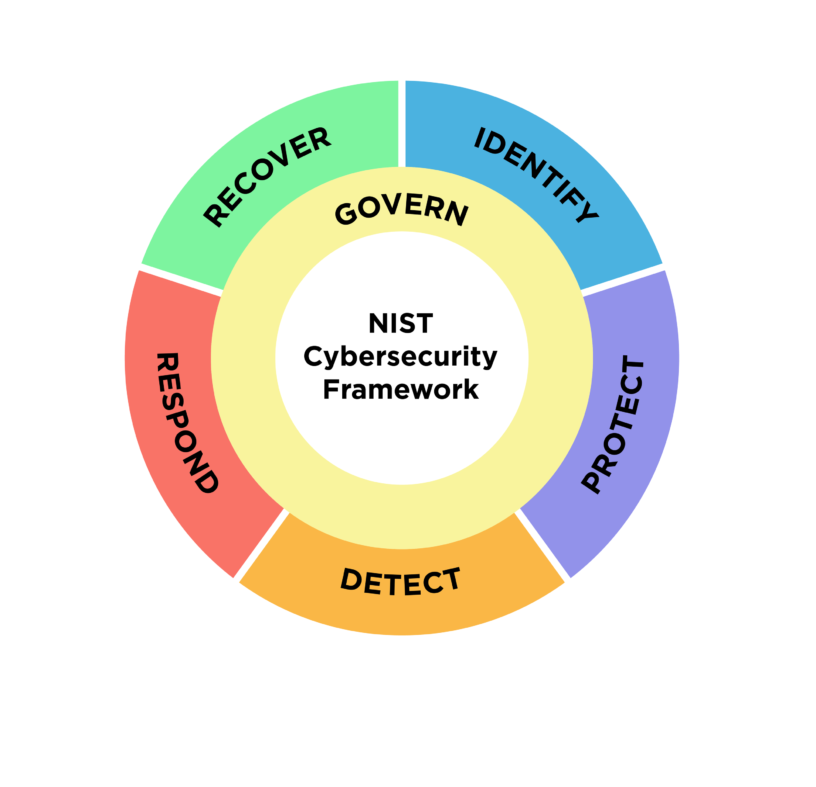In the connected digital world of today, cybersecurity has taken on a major importance for businesses of all kinds and in all sectors. Businesses now need to have strong cybersecurity procedures in place to safeguard sensitive data and keep customers’ trust because of the ongoing threat of cyberattacks, data breaches, and other malicious activity. The National Institute of Standards and Technology (NIST) created the Cybersecurity Framework (CSF), which offers an organized method for managing cybersecurity risk, to help organizations in this endeavor.
What is the NIST Cybersecurity Framework?
The NIST Cybersecurity Framework is a set of guidelines, best practices, and standards designed to help organizations manage and improve their cybersecurity posture. It was developed in response to Executive Order 13636, “Improving Critical Infrastructure Cybersecurity,” which called for the development of a voluntary framework to help organizations manage cybersecurity risk in a cost-effective manner.
Core Components of the NIST Cybersecurity Framework:
- Framework Core:
- The core of the framework consists of five functional areas: Identify, Protect, Detect, Respond, and Recover. These functions provide a high-level view of the activities necessary for effective cybersecurity management.
- Framework Implementation Tiers:
- The implementation tiers provide organizations with a structure to assess their current cybersecurity practices and determine their desired level of cybersecurity risk management. There are four tiers: Partial, Risk Informed, Repeatable, and Adaptive.
- Framework Profiles:
- Profiles are a customizable set of cybersecurity outcomes aligned with business needs, risk tolerance, and available resources. Organizations can use profiles to establish their cybersecurity goals and priorities.
- Framework Core Functions:
- Each core function is further divided into categories and subcategories, providing organizations with a detailed roadmap for implementing cybersecurity controls and measures.
Key Benefits of Implementing the NIST Cybersecurity Framework:
- Risk-Based Approach:
- The framework adopts a risk-based approach to cybersecurity, allowing organizations to prioritize their efforts and resources based on the most significant cybersecurity risks to their operations.
- Flexibility and Scalability:
- The framework is designed to be flexible and scalable, allowing organizations of all sizes and industries to tailor it to their specific needs and requirements.
- Enhanced Communication and Collaboration:
- By providing a common language and framework for cybersecurity risk management, the NIST CSF facilitates communication and collaboration between different stakeholders within an organization and across industry sectors.
- Improved Cyber Resilience:
- Implementing the framework can help organizations improve their cyber resilience by identifying and mitigating cybersecurity risks, detecting and responding to cybersecurity incidents, and recovering from cyberattacks more effectively.
- Regulatory Compliance:
- While the NIST CSF is voluntary, many organizations choose to adopt it to demonstrate compliance with regulatory requirements and industry standards related to cybersecurity.
Steps to Implementing the NIST Cybersecurity Framework:
- Assess Current Cybersecurity Practices:
- Conduct a thorough assessment of your organization’s current cybersecurity practices, including policies, procedures, technologies, and personnel capabilities.
- Create a Framework Profile:
- Develop a framework profile that aligns with your organization’s business objectives, risk tolerance, and available resources.
- Identify Gaps and Prioritize Actions:
- Identify gaps between your current cybersecurity posture and the desired outcomes outlined in your framework profile. Prioritize actions to address these gaps based on their impact on your organization’s cybersecurity risk.
- Implement Controls and Measures:
- Implement cybersecurity controls and measures to mitigate identified risks and improve your organization’s cybersecurity posture.
- Monitor and Review:
- Continuously monitor and review your cybersecurity practices to ensure they remain effective and aligned with your organization’s evolving needs and priorities.
In conclusion, organizations can manage cybersecurity risk in an organized and adaptable manner with the help of the NIST Cybersecurity Framework. Organizations can demonstrate compliance with industry standards and regulatory requirements, improve communication and collaboration, and strengthen cyber resilience by implementing the framework. In the end, putting the NIST CSF into practice can assist businesses in better safeguarding their sensitive data and upholding stakeholder and customer confidence in an increasingly digital environment.




Leave a Reply